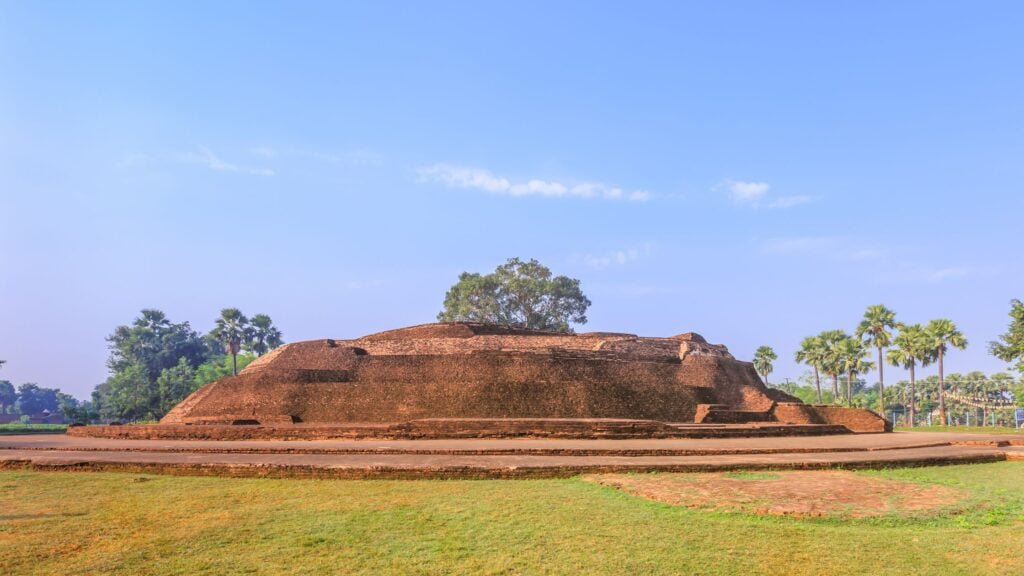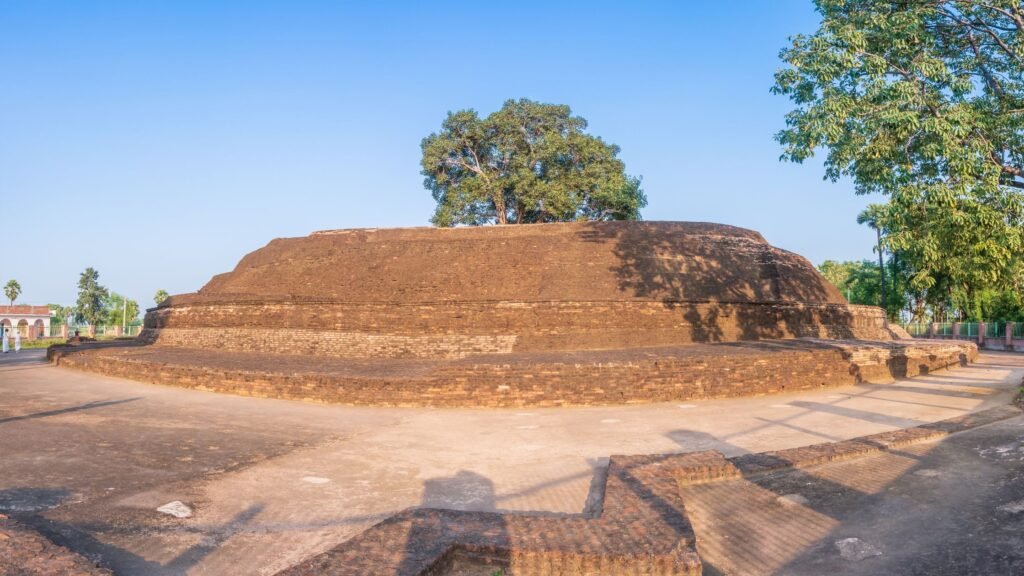Read this travelogue on the Magnificent Sujata Kuti Stupa or Garh, written by traveler Pragati Bakshi.

Sujata Stupa, also known as Sujata Kuti Stupa or Sujata Garh, is a Buddhist Stupa located in the village of Senanigrama (Bakraur) in the east of Bodh Gaya in the state of Bihar, India. It is located directly across the Phalgu River from the town of Bodh Gaya, where Gautama Buddha is believed to have attained enlightenment. From Bodh Gaya, the Sujata Stupa is at a walking distance of around 20 minutes. It was initially built in the 2nd century BCE as confirmed by finds of dark grey polished wares and a punch-marked coin discovered in excavations nearby.
The stupa was dedicated to the milkmaid Sujata, from the village of Bakraur, who is said to have fed Gautama Buddha with milk and rice at a spot in the vicinity of the Stup. He was sitting under a Banyan tree, thereby ending his seven years of fasting and asceticism, and allowing himself to attain enlightenment.
Once a magnificent Buddhist Stupa dedicated to “Sujata” from Village Sennanigram (present Bakraur village) is in ruins yet capable of stirring a quest for the antiquity of lost rich heritage and knowledge. Situated directly across the Falgu River from the Mahabodhi Temple presents a glimpse of lost glory. The erstwhile Sennanigram village is a lovely village endowed with greenery and many waterbodies.
ALSO READ: 10 Most Essential Travel Gadgets For Road Trips in India on Amazon

The Stupa stands approximately 20 feet above ground with two distinct layers of edifices. The dark grey polished ware and punched mark coins were discovered at the excavation site confirming the antiquity to the 2nd Century BC. The construction of the Stupa continued for several centuries by dynastic rulers of that area. Stupa is a double-terraced circular mound with Ayakas (offering Alters) in four main directions. The construction indicates two or three layers of previous constructions that adorned the edifice. During the third century CE, a 5-meter-wide modeled brick path was added to the surrounding of the Stup for circumambulation.
The Stupa was adorned with an Ashok pillar, which was later moved into the premises of the Mahabodhi temple. Archaeological Survey of India carried out excavations of the site in the years 1973-74 and in the years 2001-06. A plaque discovered in the excavation site has an inscription that dates back to the 8th-9th century CE. It reads “Devapala Rajasya Sujata Griha”, and in this, Devapala is interpreted as the 9th century Pala dynasty king, therefore meaning “Sujata House, of King Devapala”. From this, it can be learned that the last phase of construction of the stupa dates to Devapala in the 9th century CE, to commemorate the residence where Sujata lived.
How to reach Sujata Kuti Stupa or Gharh:
This Ancient site is well connected with a simple village road across the Niranjana or Falgu River. from Bodh Gaya. The premises of the Stupa are well maintained by the Archaeological Department and no entry fee as such is charged. The approximate distance from Bodhgaya bus station is 3 km and local conveyance is easily available for visiting the site.
ALSO READ: “Reflections on Dal Lake” – A Jewel in the Crown of Kashmir

Excellent